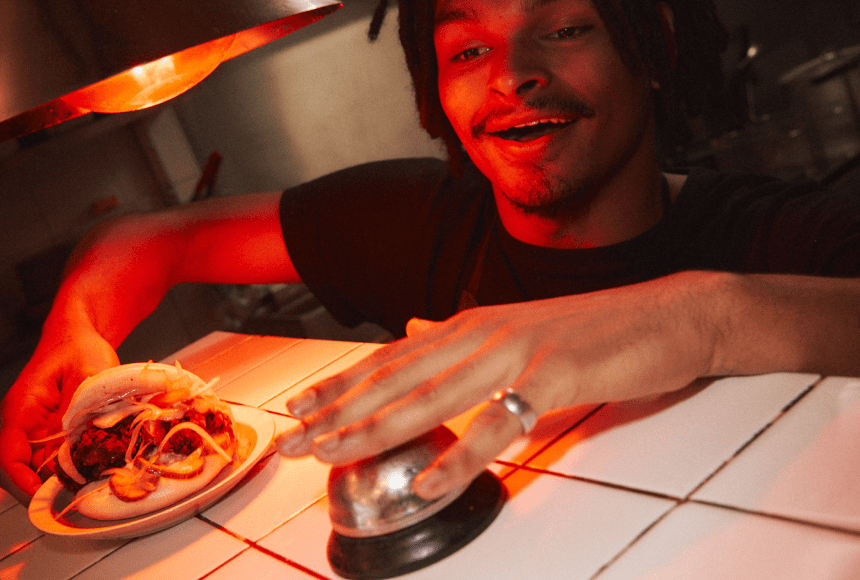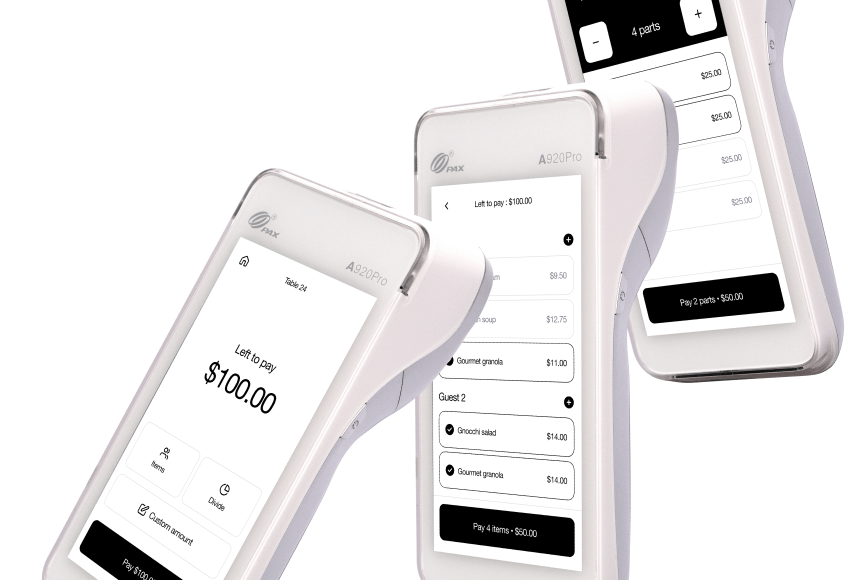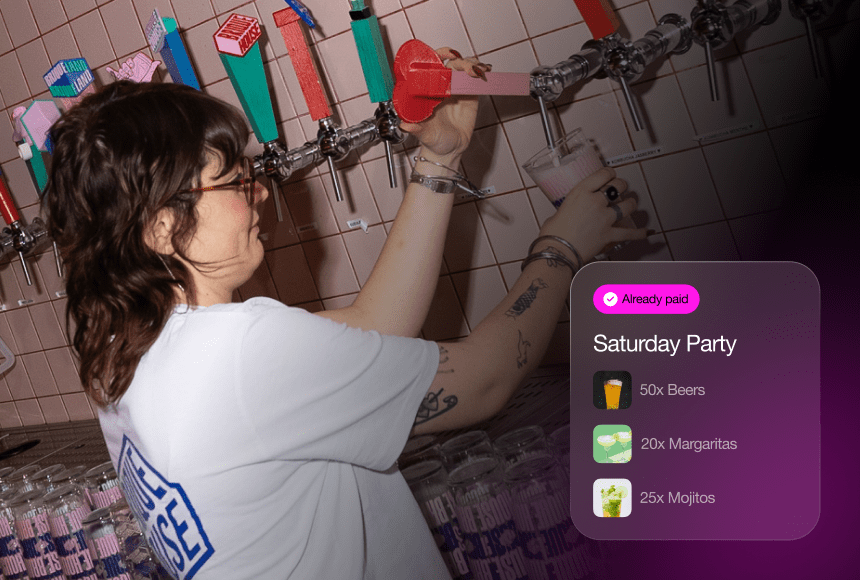
How QR Code Ordering Transforms Restaurant Operations
Why QR Codes Are Shaking Up the Dining Experience
Over the past few years, QR codes have jumped from niche tech curiosity to a mainstream tool for restaurant operations. It’s no surprise: quick scanning, contactless interactions, and real-time menu updates are all compelling perks for busy diners. But beyond these immediate conveniences, QR code ordering can reshape how you run your restaurant day to day—potentially boosting efficiency, profits, and overall customer satisfaction.
According to the National Restaurant Association, an increasing number of guests expect digital solutions that streamline their visit (source). As more customers adopt QR code ordering, restaurants that stick to old-school methods could risk appearing behind the times. Yet introducing this technology effectively can do more than modernize your space—it can profoundly impact nearly every facet of your business, from table turnover to labor costs.
In this article, we’ll explore how QR code ordering works, why it’s so popular with today’s diners, and the specific ways it can bring tangible, positive change to your restaurant operation.
Faster Table Turnover and Shorter Waits
The first major advantage of QR code ordering? Speed. Once a diner scans the code at their table, they can view your menu immediately and place their order at their own pace. If you pair this technology with a robust system, the order goes straight to the kitchen—no server needed for the middle step of writing or inputting orders into a POS. The result?
- Less waiting to order: Diners don’t have to flag down a server to get started or to ask for the check. They can do everything on their phone.
- Quicker meal turnover: By cutting out repetitive tasks, you free up your servers to focus on delivering meals, refilling drinks, and engaging with guests in more personal ways.
- Improved customer flow: Especially at peak times, this can reduce bottlenecks, since orders move directly to the kitchen.
Faster table turnover doesn’t mean rushing your guests—it means making sure they never have to wait for you. That difference can be the key to elevating your restaurant’s reputation for efficiency, while simultaneously growing your revenue potential.
Enhanced Guest Engagement and Upselling
Some restaurant owners worry that digital ordering will eliminate the personal touch of traditional table service. But in reality, automating the transactional parts of the process can free your staff to connect with customers on a deeper level. Rather than juggling multiple notepads and dashing to the POS, your servers can spend more time:
- Greeting customers warmly: A smile and friendly welcome go a long way toward creating a positive, memorable first impression.
- Sharing stories behind dishes: Staff can highlight the origins of your fresh produce or the inspiration behind a special sauce, making the meal more meaningful.
- Managing special requests: If a customer has allergies or specific dietary needs, your server can focus on ensuring those needs are met—rather than rushing to type in orders.
On the upselling front, QR code menus can be surprisingly effective. A well-designed digital menu can highlight popular items, seasonal specials, or recommended add-ons (like a signature side or dessert) without feeling pushy. Guests have the freedom to browse at their leisure—and many will indulge in that tempting cocktail or decadent dessert when they see an enticing image or chef’s note. This can result in a higher average check size than you might see with a traditional paper menu.
Streamlining Your Staffing Model
Running a restaurant often means juggling labor schedules and controlling overtime. If servers are spending less time manually taking orders or handling checks, you may discover you can manage the same level of business—or more—with a leaner staff. Your team members can focus on tasks that truly need a human touch, such as:
- Ensuring meal quality: They can verify plates arrive looking and tasting as you intend, handle last-minute garnishes, or solve kitchen hiccups in real time.
- Building customer rapport: Chatting with diners, recommending wine pairings, and making the environment feel warm and welcoming.
- Handling issues promptly: If a dish needs to be remade or a diner requests a modification, a staff member can jump on it before it becomes a bigger problem.
This allocation of labor can lead to real savings, especially in an era where labor costs continue to rise. In short, QR code ordering helps you direct your staff where they’re needed most while letting automation handle repetitive tasks.
Minimizing Order Errors
Miscommunication in a bustling restaurant environment is inevitable—unless you arm yourself with technology that bypasses the risk of human error. When orders go directly from the customer’s phone to your kitchen display or POS, the chance of mistakes drops dramatically. Fewer errors can translate to:
- Less food waste: You won’t have to remake dishes that come out incorrectly.
- Higher customer satisfaction: Guests appreciate not having to send back an incorrect item or clarify their request a second time.
- Smoother operations: Chefs can focus on cooking rather than verifying secondhand notes.
If an error occurs, you’ll know it’s likely on the diner’s end (like they pressed the wrong button), which can help you quickly identify and solve the root cause. That’s a simpler problem than tracking down exactly where a verbal request got lost in translation on a busy evening.
Immediate Menu Updates and Inventory Control
Running out of the day’s special mid-lunch rush? With a physical menu, you’d have to explain to each new table that the special is no longer available—or print out fresh menus if you’re extremely prepared. But a digital, QR code-based menu can be edited in seconds.
- Real-time changes: If you run out of an ingredient, remove or hide the relevant dish so diners only see items you can fulfill.
- Seasonal adjustments: Roll out new offerings in sync with available produce or local partnerships. This keeps your menu fresh and interesting.
- Dynamic pricing: Some restaurants even tweak prices for certain events or times of day. While this strategy might not work for every concept, the flexibility is there if you need it.
By keeping your menu up to date—instantly—you avoid disappointment or confusion. A customer won’t order something you can’t serve, and your staff won’t have to spend valuable energy apologizing for surprises.
Building Customer Loyalty Through Convenience
Customers will return to restaurants that make their dining experience easy, enjoyable, and memorable. QR code ordering often delivers all three. The convenience factor alone can foster loyalty, especially among diners with busy schedules or families who appreciate an effortless mealtime. But there’s more:
- Contactless payment options: Some QR code solutions, like sunday, allow instant bill viewing and payment, plus the option to leave a tip and share a quick review. When a guest can wrap up their visit without waiting, it’s a major selling point.
- Personalized promos: If you collect emails or phone numbers through a user-friendly sign-up process, you can share targeted offers or loyalty perks, inviting diners back sooner.
- Reduced friction: By removing unnecessary steps—like hunting down a server to pay or deciphering a cramped paper menu—you make the entire outing stress-free.
In today’s competitive restaurant market, eliminating friction can set you miles apart. QR code ordering is one of the simplest ways to trim the tiny headaches that push diners toward other options.
Leveraging Data for Better Decision-Making
Digitizing your ordering process also unlocks powerful insights you simply can’t get from a stack of receipt slips. Many QR code systems track data like:
- Top-selling items: Know which dishes are consistently popular, and which might need a revamp or better promotion.
- Order times: Spot patterns in high-volume moments or slow stretches, helping you schedule staff more effectively.
- Guest trends: Learn what combos people frequently purchase (like a particular beverage with a certain appetizer) and tailor your menu or promotions accordingly.
When you have actual numbers to reference, decisions about menu changes or marketing strategies become more grounded. For instance, if you notice that a happy hour special always drives an early dinner rush, you could expand that offer or create a different variation of it for weekends. Data-driven tweaks often boost profits and keep your restaurant evolving in line with guest preferences.
Examples from the Field: A Quick Case Study
Let’s imagine a mid-sized Italian restaurant called “La Bella Cucina.” Pre-QR code, they relied on servers to greet guests, describe specials, and input orders into a single POS terminal. On busy nights, lines formed just to place an order. After adopting QR code ordering—integrated with their existing POS system—several transformations quickly became apparent:
- 30% faster table turnover: With guests scanning and ordering right away, “La Bella Cucina” fit more covers into each evening shift without sacrificing the diner experience.
- Reduced front-of-house labor costs: They needed fewer servers on the floor, saving on payroll. The staff who remained spent more time on guest interaction, leading to better online reviews.
- Consistent upselling: The digital menu included mouthwatering photos of desserts and recommended wine pairings, boosting average check size by 10%.
- Real-time menu management: Their daily “Risotto Special” sold out at 7 p.m. The kitchen updated the menu within seconds, so new diners never saw the out-of-stock dish—no disappointed customers or lengthy explanations needed.
In a matter of weeks, the owner realized more profit potential than expected, all because of the efficiency gained and the personalized approach that staff could finally deliver.
Addressing Common Concerns
Introducing new technology always raises questions. Some restaurant owners worry about older guests or those without smartphones. Others fear losing the human element. Here’s how to handle these concerns:
- Offer a backup menu: Keep a few traditional paper menus for diners uncomfortable with or unable to use smartphones. This ensures inclusivity.
- Train staff for a hybrid model: Yes, automation will handle routine tasks, but staff remain vital to provide warm hospitality, answer questions, and handle any tech glitches.
- Educate diners discreetly: Place small table tents or signage with a QR code demonstration, prompting them to “Scan here to view our menu and order!” If they look uncertain, your servers can assist with a friendly approach.
These steps ensure you reap the benefits of modern tech without alienating any segment of your customer base.
Adapting to Shifting Consumer Expectations
Consumer behavior has changed dramatically in the last decade—particularly regarding how people use their smartphones. Whether booking rideshares, shopping online, or ordering takeout, society has grown accustomed to immediate access and minimal friction. Restaurants that ignore these evolving expectations might find themselves left behind.
By integrating QR code ordering, you signal that you respect your customers’ time and want to give them the best possible experience, powered by technology. Restaurant Dive notes that digital solutions can significantly influence where and how often people choose to dine (source). Adapting now, rather than later, can position you as an industry leader that proactively meets—and even predicts—customer needs.
Your Roadmap to a Successful Rollout
Ready to harness QR code ordering? Here’s a quick checklist to get started:
- Choose the right platform: Consider whether you need a standalone system or an integration with your existing POS. Make sure it supports essential features like easy menu editing and direct-to-kitchen order routing.
- Design a user-friendly menu: Keep descriptions short, add tempting photos, and highlight best-sellers. Clear sections and categories guide diners logically.
- Train your team: Everyone from servers to kitchen staff should understand how the system works, so they can address diner questions and adjust to new workflows.
- Provide clear instructions for guests: Visible signage on tables or a short note explaining “Scan to order!” is often enough. Offer help if someone looks confused.
- Iterate and improve: Track data on how diners use the menu, note popular or underperforming items, and refine your approach. Listen to staff and customer feedback to smooth out kinks.
The New Era of Dining Efficiency
From quicker table turns to deeper customer connections, QR code ordering can have a powerful, positive ripple effect on nearly every aspect of your restaurant business. Far from diminishing hospitality, this technology typically empowers staff to focus on what they do best: delighting guests, managing details that require a human touch, and keeping the overall experience top-notch.
Yes, adopting new tech might feel daunting at first. But as success stories emerge from eateries of all sizes, it’s clear that the benefits can be substantial—especially for restaurants looking to boost profits and deliver modern convenience. Plus, the analytics and adaptability you gain can lead to smarter decisions that keep your menu fresh and your operations running efficiently.
If you’ve been on the fence, consider this your nudge to explore QR code ordering. By embracing the shift, you’re not just following a trend—you’re setting your restaurant up for a more seamless, data-driven, and guest-focused future.
Find out more today
Drop us your details below and we’ll reach out within the next 24h



